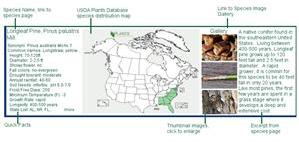future.
ENDEMIC:
A plant or animal restricted to a particular area, region, or river system.
RELICT: A plant or animal species living in isolation in a small local area, or as a remnant of an almost extinct group.
EXTIRPATED:
Species that have disappeared from Kentucky but still exist elsewhere.
EXTINCT:
Species that no longer exist
In addition to those, there are 4 trees which are considered rare in the state.
Kentucky has 6 classifications for threatened plant species
and are defined as follows:
ENDANGERED:
Species in imminent danger of extinction throughout all or a large part
of their range.
THREATENED:
Species that are likely to become endangered within the foreseeable
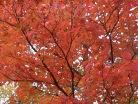


Want to add your tree to our picture gallery? Click here for details!
-Color denotes a tree that is rare or endangered



™

Native Trees of Kentucky

Custom Search
We are part of the Hubpages community.
Click here for more info.
Click here for more info.
State Tree: Tulip Tree

First made the state tree in 1954, then readopted on July 15, 1994, the tuliptree, and its validity as such, was the center of controversy for some 40 years. Prior to the 1994 adoption, a species of catalpa and the American sycamore had their supporters and many believed the Kentucky Coffeetree was (and still is) the rightful state tree. In fact, there are still some sources out there stating Kentucky's State Tree is the Kentucky Coffeetree. According to the Kentucky Secretary of State, as well as the State General Assembly, the State Tree is indeed Liriodendron tulipifera.
Usually growing 100-200 feet tall, the state champion on Kentucky's Big Tree Registry is
178 feet tall and may be found in McCreary County. A member of the magnolia family, Tulip
trees bloom creamy yellowish bell shaped flowers in the summer. Both the flowers and
Tulip Tree, Liriodendron tulipifera Robert H. Mohlenbrock @
USDA-NRCS PLANTS Database / USDA NRCS. 1995. Northeast
wetland flora: Field office guide to plant species. Northeast National
Technical Center, Chester. See usage requirements.
the leaves have a tulip like shape, which contributed to the species' many descriptive common names. The distinct leaves of this
deciduous tree are yellowish green and 4 to 6 inches long. Shade intolerant, tulip trees, or yellow poplars as they are sometimes
called, are fast growing and may be as tall as 50 feet in only 20 years. This, combined with the attractive leaf shape, yellow flowers,
fall colors, and pyramidal form, make tulip trees a popular amenity tree species. Liriodendron tulipifera is also more disease and
insect resistant than many native trees and can survive low to moderate fires when mature. The fruit of Tuliptrees are actually a
cluster of paper like samaras. A variety of small wildlife eat the seeds from within the samaras and deer prefer the foliage over other
native tree species.
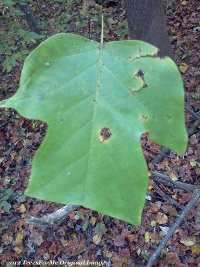
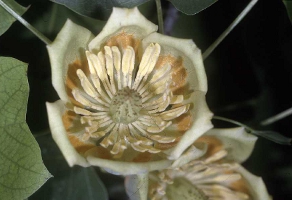

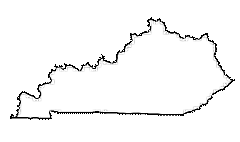
The Bluegrass State, 'United we stand, divided we fall'
Kentucky
Home>Browse by State>Kentucky
The hardwood forests of Kentucky are spread over mountains, valleys, rivers, lakes and canyons providing a wide array of habitats for many forest types. Second only to Florida for hardwood diversity, Kentucky is one of the most biologically diverse temperate zones in the world. While oak-hickory forests are the predominant forest type, in late winter/early spring, the forests bloom with the small red winged samaras of the most populous tree, the red maple. Sharing the title of one of the tallest tree species of the eastern forests with eastern white
pine and eastern cottonwood, the tallest tree in Kentucky is a 178 foot tuliptree, or yellow
poplar, located in McCreary County. The widest is a baldcypress with a trunk circumference
measuring over 27 feet.
Those wishing to visit one of Kentucky's 50+ state parks are in for a treat as the parks are
rated some of the best in the country. From primitive camping, tent or RV camping, to staying
at one the the luxurious Resort State Park lodges, those seeking outdoor adventures or
solitude have a plethora of options. The state park system also caters to those who want to
meander through old growth forests on horseback, as there are many equine trails and camps
available. The largest old growth forest is Blanton Forest on Pine Mountain and is one of the
most important forests managed by the state. Another large old growth forest,The Big
Woods, is listed as a Natural Heritage site by the Kentucky State Nature Preserves
Commission. It lies within the Mammoth Cave National Park, which houses another jewel of
North America. Located in south central Kentucky, it contains the world's longest known cave
system. Over 400 miles of caves have already been explored and there are tours available.
In addition to the National Park, two National Forests add even more ways to enjoy the
diversity of Kentucky's landscape.
The lakes and rivers among the hardwood forests are popular in the spring and fall among
birding enthusiasts. There are annual birding festivals where people come from miles around
hoping to catch a glimpse of migratory birds or see bald eagles and their young. Hikers can
enjoy hundreds of miles of trails and will see waterfalls, like the 'Niagra of the South'
Cumberland Falls, natural bridges, and more. Those keeping their eyes toward the ground
may be rewarded by finding one of the many stones admired by horehounds. Moonstone,
topaz, citrine, quartz, pyrite and even sapphire, emeralds, amethysts, or rubies are some of
the treasures buried in the dirt and river ways. You can even find places to do recreational

Kentucky Native Tree Facts

Forested acres: 12.4 million
Percent of total area forested: 48%
Most Common Tree: Red Maple, Acer rubrum
Predominant Forest Type: Oak-Hickory
Number of National Forests: 2
Number of State Parks/Forests/Recreational Areas: 52
Number of Tree city USA communities: 32
Number of invasive tree species: 45 (see state list for noxious/invasive plants)
Insects of Concern: Emerald Ash Borer, Hemlock Wooly adelgid
Pathogens of Concern: Oak Wilt, Dutch Elm Disease, Thousand Canker Disease
Number or Rare, Threatened or Endangered Species: 19
Number of tree families in our collection: 32
Sources:
Arborday.org
US Forest Service
Kentucky Department of Fish and Wildlife Resources
KY State Nature Preserves Commission
Energy and Environmental Cabinet: Department of Natural Resources: Kentucky Division of Forestry
United States Department Of Agriculture, Natural Resources Conservation Services: PLANTS Database
Additional state resources:
Kentucky State Parks Department- Annual Park Passes available!
University of Kentucky, College of Agriculture- Cooperative Extension Service
Percent of total area forested: 48%
Most Common Tree: Red Maple, Acer rubrum
Predominant Forest Type: Oak-Hickory
Number of National Forests: 2
Number of State Parks/Forests/Recreational Areas: 52
Number of Tree city USA communities: 32
Number of invasive tree species: 45 (see state list for noxious/invasive plants)
Insects of Concern: Emerald Ash Borer, Hemlock Wooly adelgid
Pathogens of Concern: Oak Wilt, Dutch Elm Disease, Thousand Canker Disease
Number or Rare, Threatened or Endangered Species: 19
Number of tree families in our collection: 32
Sources:
Arborday.org
US Forest Service
Kentucky Department of Fish and Wildlife Resources
KY State Nature Preserves Commission
Energy and Environmental Cabinet: Department of Natural Resources: Kentucky Division of Forestry
United States Department Of Agriculture, Natural Resources Conservation Services: PLANTS Database
Additional state resources:
Kentucky State Parks Department- Annual Park Passes available!
University of Kentucky, College of Agriculture- Cooperative Extension Service
Kentucky Native Tree Families and Genera

click to enlarge.
Useful information while browsing species:
• How to read a botanical name
• How to use our species boxes:
• How to read a botanical name
• How to use our species boxes:
-Color denotes a tree that is rare or endangered
Additional Resources:
North American Native Tree Families
North American A to Z List by Scientific Name
North American A to Z List by Common Name
North American Native Tree Families
North American A to Z List by Scientific Name
North American A to Z List by Common Name

Please note: This is not a complete list of all native tree families and species found in Kentucky. We are constantly working towards a more comprehensive list and will add families and their species as completed.
Follow the links to view species native to Kentucky. If the genus is not linked, species are listed on the family page.
Aceraceae, Maple
Aquifoliaceae, Holly
Anacardiaceae, Sumac
Rhus, Sumac
Toxicodendron, Poison Sumac
Annonaceae, Custard-apple
Betulaceae, Birch
Betula, Birch
Carpinus, Hornbeam
Corylus, Hazelnut
Ostrya, Hophornbeam
Bignoniaceae, Trumpet Creeper
Caprifoliaceae, Honeysuckle
Cornaceae, Dogwood
Cornus, Dogwood
Nyssa, Tupelo
Cupressaceae- Cypress
Juniperus, Juniper
Taxodium, Baldcypress
Thuja, Arborvitae
Aceraceae, Maple
Aquifoliaceae, Holly
Anacardiaceae, Sumac
Rhus, Sumac
Toxicodendron, Poison Sumac
Annonaceae, Custard-apple
Betulaceae, Birch
Betula, Birch
Carpinus, Hornbeam
Corylus, Hazelnut
Ostrya, Hophornbeam
Bignoniaceae, Trumpet Creeper
Caprifoliaceae, Honeysuckle
Cornaceae, Dogwood
Cornus, Dogwood
Nyssa, Tupelo
Cupressaceae- Cypress
Juniperus, Juniper
Taxodium, Baldcypress
Thuja, Arborvitae
Ebenaceae, Ebony
Diospyros, Persimmon
Ericaceae, Heath
Fabaceae, Pea
Gleditsia, Locust
Fagaceae, Beech
Quercus, Oak
Hamamelidaceae, Witch-hazel
Hippocastanaceae, Horse-chestnut
Juglandaceae, Walnut
Carya, Hickory
Juglans, Walnut
Lauraceae, Laurel
Magnoliaceae, Magnolia
Moraceae, Mulberry
Oleaceae, Olive
Fraxinus, Ash
Pinaceae, Pinus
Pinus, Pine
Diospyros, Persimmon
Ericaceae, Heath
Fabaceae, Pea
Gleditsia, Locust
Fagaceae, Beech
Quercus, Oak
Hamamelidaceae, Witch-hazel
Hippocastanaceae, Horse-chestnut
Juglandaceae, Walnut
Carya, Hickory
Juglans, Walnut
Lauraceae, Laurel
Magnoliaceae, Magnolia
Moraceae, Mulberry
Oleaceae, Olive
Fraxinus, Ash
Pinaceae, Pinus
Pinus, Pine
Platanaceae, Plane-tree
Platanus, Sycamore
Rhamnaceae, Buckthorn
Rosaceae, Rose
Crataegus, Hawthorn
Prunus, Plum/Cherry
Rubiaceae, Madder
Rutaceae, Rue
Salicaceae, Willow
Populus, Cottonwood
Salix, Willow
Sapotaceae, Sapodilla
Styracaceae, Storax
Halesia, Silverbell
Theaceae, Tea
Tiliaceae, Lindon
Tilia, Basswood
Ulmaceae, Elm
Celtis, Hackberry
Ulmus, Elm
Platanus, Sycamore
Rhamnaceae, Buckthorn
Rosaceae, Rose
Crataegus, Hawthorn
Prunus, Plum/Cherry
Rubiaceae, Madder
Rutaceae, Rue
Salicaceae, Willow
Populus, Cottonwood
Salix, Willow
Sapotaceae, Sapodilla
Styracaceae, Storax
Halesia, Silverbell
Theaceae, Tea
Tiliaceae, Lindon
Tilia, Basswood
Ulmaceae, Elm
Celtis, Hackberry
Ulmus, Elm
Kentucky Endangered or Threatened Tree Species

Additional Resources:
North American Rare and Endangered Trees
External Links:
USDA PLANTS Database
Kentucky Department of Fish and Wildlife Resources
North American Rare and Endangered Trees
External Links:
USDA PLANTS Database
Kentucky Department of Fish and Wildlife Resources
Looking for a nursery near you?
Check out our nursery listing by county below!
Sorry, we do not currently have any tree nursery listings for this state. We do update these lists, so please check back.
Check out our nursery listing by county below!
Sorry, we do not currently have any tree nursery listings for this state. We do update these lists, so please check back.



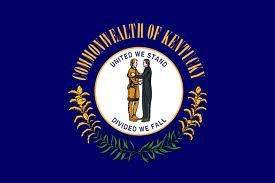
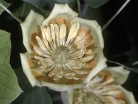
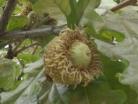
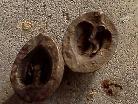
Rare
Carya carolinae-septentrionalis - Southern Shagbark Hickory
Quercus nigra - Water Oak
Quercus texana - Nuttall's Oak, Texas Red Oak
Taxus canadensis - Canadian Yew
Carya carolinae-septentrionalis - Southern Shagbark Hickory
Quercus nigra - Water Oak
Quercus texana - Nuttall's Oak, Texas Red Oak
Taxus canadensis - Canadian Yew
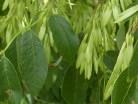
- Trees
- A-Z scientific
- A-Z by Common Name
- Families
- Aceraceae Maple Family
- Anacardiaceae Sumac Family
- Annonaceae Custard Apple Family
- Aquifoliaceae Holly Family
- Arecaceae, Palm Family
- Betulaceae Birch family
- Bignoniaceae Trumpet Creeper Family
- Burseraceae Frankincense Family
- Caprifoliaceae Honeysuckle Family
- Chrysobalanaceae Coco-plum Family
- Cornaceae Dogwood Family
- Cupressaceae Cypress Family
- Cyrillaceae Cyrilla Family
- Ebenaceae Ebony Family
- Ericaceae Heath Family
- Fabaceae Pea Family
- Fagaceae Beech Family
- Hamamelidaceae Witch Hazel Ffamily
- Hippocastanaceae Horse Chestnut Family
- Juglandaceae Walnut Family
- Lauraceae Laurel Family
- Leitneriaceae Corkwood Family
- Magnoliaceae Magnolia Family
- Meliaceae Mahogany Family
- Moraceae Mulberry Family
- Myricaceae Bayberry Family
- Myrsinaceae Myrsine Family
- Myrtaceae Myrtle Family
- Nyctaginaceae Four Oclock Family
- Olacaceae Olax Family
- Oleaceae Olive Family
- Pinaceae Pine Family
- Platanaceae Plane Tree Family
- Polygonaceae Buckwheat Family
- Rhamnaceae Buckthorn Family
- Rosaceae Rose Family
- Rubiaceae Madder Family
- Rutaceae Rue Family
- Salicaceae Willow Family
- Sapindaceae Soapberry Family
- Sapotaceae Sapodilla Family
- Simaroubaceae Quassia Family
- Styracaceae Storax Family
- Symplocaceae Sweetleaf Family
- Theaceae Tea Family
- Tiliaceae Lindon Family
- Ulmaceae Elm Family
- Taxaceae Yew Family
- Yucca Family
- Browse by State
- Rare or Endangered Species
- Trees_with_Special_Uses
- Tallest and Biggest
- Noxious Weeds
- Causes
- About Us
- Our Stores
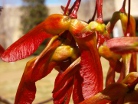
Special Concern
Gleditsia aquatica - Water Locust
Juglans cinerea - White Walnut, Butternut
Malus angustifolia- Southern Crab Apple
Endangered
Acer spicatum - Mountain Maple
Castanea dentata - American Chestnut
Sambucus racemosa ssp. pubens - Red Elderberry
Toxicodendron vernix- Poison Sumac
Ulmus serotina - September Elm
Viburnum nudum - Possumhaw
Gleditsia aquatica - Water Locust
Juglans cinerea - White Walnut, Butternut
Malus angustifolia- Southern Crab Apple
Endangered
Acer spicatum - Mountain Maple
Castanea dentata - American Chestnut
Sambucus racemosa ssp. pubens - Red Elderberry
Toxicodendron vernix- Poison Sumac
Ulmus serotina - September Elm
Viburnum nudum - Possumhaw
Threatened
Aesculus pavia - Red Buckeye
Carya aquatica - Water Hickory
Castanea pumila - Allegheny Chinkapin, Chinquapin
Halesia tetraptera - Common Silverbell
Juniperus communis- Common Juniper
Thuja occidentalis - Northern White Cedar
Aesculus pavia - Red Buckeye
Carya aquatica - Water Hickory
Castanea pumila - Allegheny Chinkapin, Chinquapin
Halesia tetraptera - Common Silverbell
Juniperus communis- Common Juniper
Thuja occidentalis - Northern White Cedar
fossil hunting!
Swimming, boating, fishing, hiking, camping and everything in between is easy to enjoy in Kentucky. There aren't many places in North America where you can see so many different tree species and with such a beautiful landscape, Kentucky has many places to get away from it all and surround yourself with nature.
Swimming, boating, fishing, hiking, camping and everything in between is easy to enjoy in Kentucky. There aren't many places in North America where you can see so many different tree species and with such a beautiful landscape, Kentucky has many places to get away from it all and surround yourself with nature.
Tree lists:
•A-Z by scientific
name
•A-Z by common
name
•By Family
For state A-Z list click state name below.
•A-Z by scientific
name
•A-Z by common
name
•By Family
For state A-Z list click state name below.



